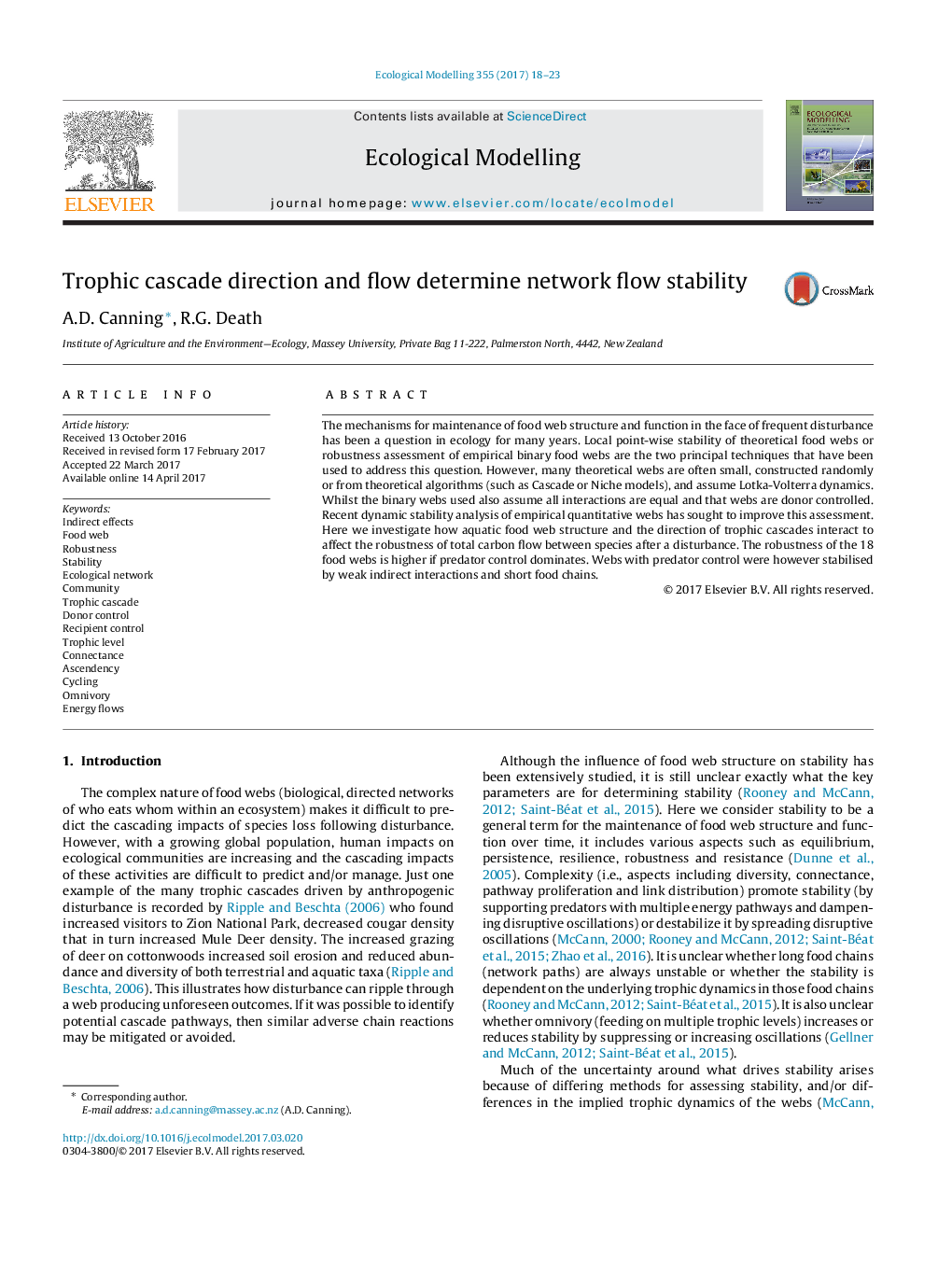| Article ID | Journal | Published Year | Pages | File Type |
|---|---|---|---|---|
| 5742104 | Ecological Modelling | 2017 | 6 Pages |
The mechanisms for maintenance of food web structure and function in the face of frequent disturbance has been a question in ecology for many years. Local point-wise stability of theoretical food webs or robustness assessment of empirical binary food webs are the two principal techniques that have been used to address this question. However, many theoretical webs are often small, constructed randomly or from theoretical algorithms (such as Cascade or Niche models), and assume Lotka-Volterra dynamics. Whilst the binary webs used also assume all interactions are equal and that webs are donor controlled. Recent dynamic stability analysis of empirical quantitative webs has sought to improve this assessment. Here we investigate how aquatic food web structure and the direction of trophic cascades interact to affect the robustness of total carbon flow between species after a disturbance. The robustness of the 18 food webs is higher if predator control dominates. Webs with predator control were however stabilised by weak indirect interactions and short food chains.
